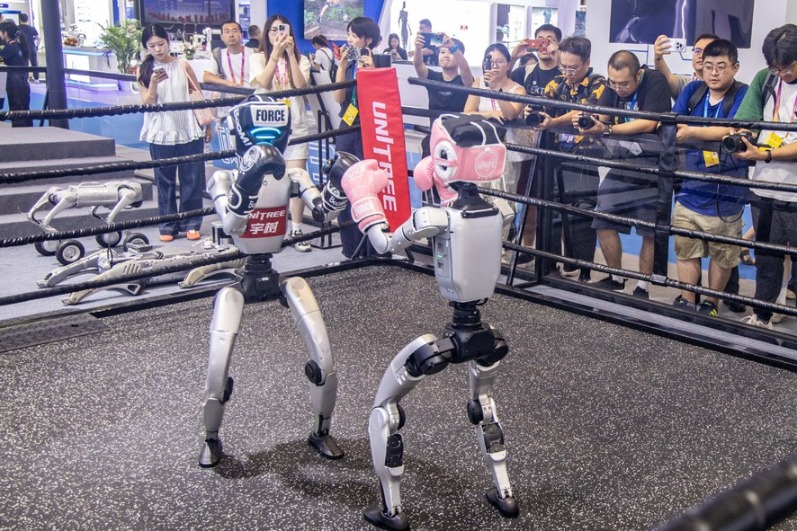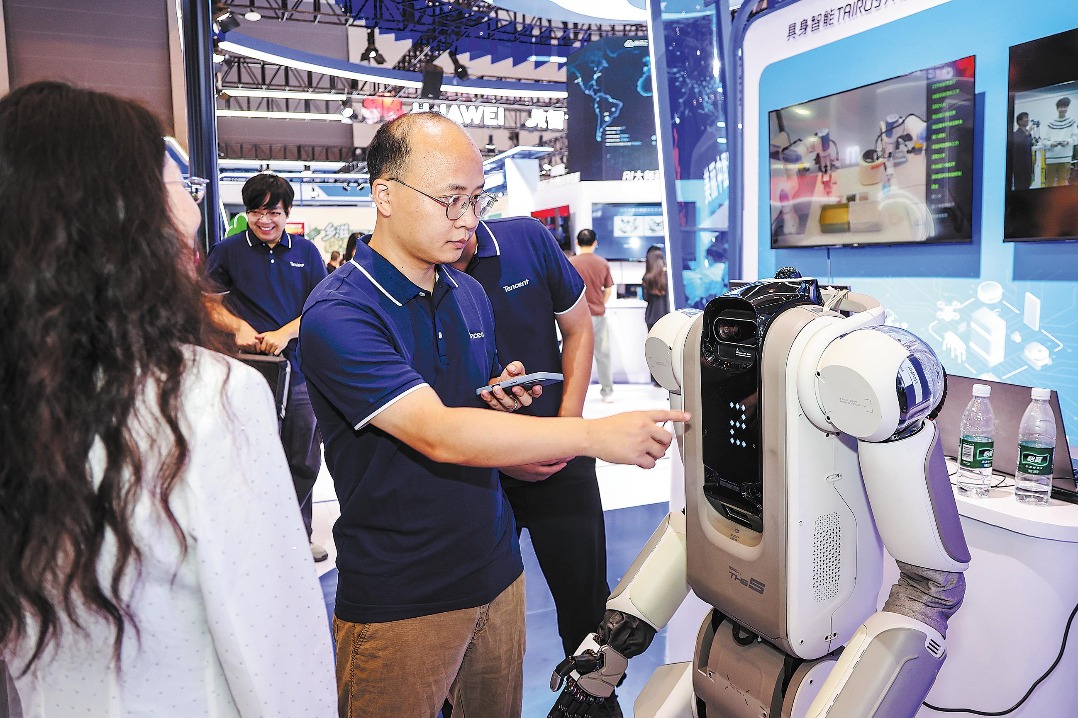On the other side of the digital divide


The local authorities said tech-savvy family members could help non-smartphone users, such as the elderly and children, apply to get them installed on their mobile handsets and print out screenshots of the code. But the paper version is valid for just a week.
The efforts of the local authorities notwithstanding, the bus episode highlighted the digital divide that has widened since the outbreak of the epidemic, which prompted government officials to shift many of the essential services from brick-and-mortar offices to virtual platforms.
Hu Qiao, a retiree based in Chengdu, Sichuan province, said the digitalization drive in local hospitals-which accelerated after the outbreak to help keep people away from suspected virus carriers-has increased her dependency on her daughter Shangguan Zirui for tasks ranging from making online reservations for visiting a doctor to paying bills.
Motivated by her mother's dilemma, Shangguan, 33, started a project in Chengdu in July to make so-called active seniors aged between 55 and 70 digitally literate, because they require basic digital knowledge for their social mobility.
She said older adults are marginalized in this era of health code, digitalized hospital registration system and car-hailing services.
"Many were successful in their respective fields as professionals, but after retirement they have been labeled 'old people', which is a bit of ageism," she said.
Officially, people aged 60 or above are classified as senior citizens, which means the youngest in the age group were born in the late 1950s and could access the internet only after their mid-30s. Smartphones and apps are relatively recent developments, so they struggle to use high-tech devices and apps.
Data from the China Internet Network Information Center show that internet users age 60 or above make up just 6.7 percent of the country's 904 million netizens, which means underrepresentation given that senior citizens account for 18.1 percent of the total population. China had about 253 million people aged 60 or above by the end of last year, according to the National Bureau of Statistics.
Employability
The digital divide has caused inconveniences, especially to the elderly.
Bank tellers are generally reluctant to deal with small-sum transactions, compelling the elderly to use ATMs that many of them struggle to comprehend. Self-service convenient stores have mushroomed to slash operation costs, but they don't have any space for older people who are not comfortable with online payment.
The digital divide can also reduce older worker's employability as many things have gone virtual to reduce physical visits to government offices.
Peng Ziying knows the impact of the digital divide on the elderly.
She works in Beijing but often provides digital guidance via video chats on messaging app WeChat for her father, a truck driver in Zhaoqing, Guangdong province, who drives regularly to the provincial capital of Guangzhou.
As Guangzhou limits the number of out-of-town vehicles entering the city's urban areas, Peng's father struggles to find out the date, area and time slots for entering the city so as to avoid penalties.
"I am busy myself, and I can help him only after work," Peng said.
The disadvantages are also felt by older migrant workers, whose limited digital literacy prevents them from claiming a slice of the country's fast-expanding gig economy as designated drivers, food delivery-persons and couriers.
Instead, they have to opt for physically challenging work at construction sites.
Statistics from the Beijing Municipal Commission of Housing and Rural-Urban Development show the average age of construction workers in the city was 43.1 in 2017, almost 10 years older than in 2007.
And by the end of 2017, workers in the 40-to-60 age group accounted for 60 percent of the capital's construction workforce compared with 35 percent in the 20-to-40 age group.
Catering to seniors
Shangguan said they have been developing courses to help senior citizens learn how to maximize the use of their handsets and gather some experience of surfing the internet to shake off solitude.
The courses cover how to use a calculator, calendar and other in-built functions on handsets, and how to adjust the font size, which is a crucial skill for the elderly.
"Many of the software developed (by big companies) target young people, and usually feature minimalist design, small characters and multiple content sections, which are very unfriendly for elderly users," she said, adding that tutorials and guides are usually absent.
As such, she suggested that developers consider the needs of senior citizens and develop tailored versions for them, or allow them to quickly switch to "elderly mode".
Yang Yifan, deputy head of the National Interdisciplinary Institute on Aging affiliated with the Southwest Jiaotong University in Chengdu, said China cannot afford to let the elderly lag behind the rest of the population in the digital era as there will be huge price to pay.
"In the digital age, we need to make appropriate use of information and communications technology to lower the threshold so that older people can connect with the information age at their current cognitive level," he said.



































